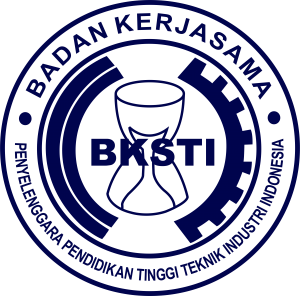PEMANFAATAN LIMBAH FLY ASH DARI PEMBAKARAN BATUBARA PADA PEMBUATAN SEMEN PCC (PORTLAND COMPOSITE CEMENT) DI PT SEMEN XYZ LAMPUNG
DOI:
https://doi.org/10.37090/indstrk.v4i2.233Keywords:
Fly ash; PCC (Portland Composite Cement); Raw materials; Technical Study; WasteAbstract
This study discusses the use of fly ash waste from coal burning on the manufacture of PCC (Portland composite cement) at PT. XYZ Lampung. The purpose of this research is to look at the technical studies and the efficiency of raw materials in the use of fly ash in cement making, in this case PCC cement (Portland Composite Cement). The steps taken in analyzing the data in this study were viewed from a technical aspect by means of a physical test, namely the cement compressive strength test at the age of 3 days, 7 days, and 28 days using the Compression Testing Machine. This test was conducted to see the comparison of the compressive strength of PCC cement using limestone and fly ash as raw materials, then calculate the difference in raw material costs in the year before and after the replacement of limestone with fly ash. The results showed that cement with the addition of fly ash after 3 days, 7 days and 28 days had an increased compressive strength value, which increased 21.69%, 16.07% and 8.05% respectively of the compressive strength of cement using limestone. The use of fly ash as a substitute for limestone has an effect on the cost of raw materials, where the difference between the cost of raw materials in 2019 and the cost of raw materials in 2018 is Rp. 39,440,952,074.
Downloads
References
Clarence W Dunham. (1966). The Theory and Practice of
Reinforced Concrete. New York, United States of America: McGraw-Hill Book Company
Hakim Iqbal. 2020. Batu Bara : Pengertian, Jenis, dan
Proses Terbentuknya. https://insanpelajar.com/batu-bara/ (di akses pada tanggal 9 Juni 2020)
Istighfar, Irfan, et.al. (2014). Analisa Perbandingan Kuat
Tekan Beton Semen PCC dan Semen Tipe 1 terhadap Pemakaian Sikament NN. Jurnal Online Mahasiswa, Vol.1.no. 1. 2014. Riau University.
Kabir, Dahri, et.al. Penggunaan Fly Ash Sebagai Bahan
Tambah Pada Proses Pembuatan Mortar dengan Bahan Dasar Pasir Apung. Techno: Jurnal Penelitian Vol.7. No.2 (2018): 157-164.
Klarens, Kevin, et al. Pemanfaatan Bottom Ash dan Fly
ash Tipe C sebagai Bahan Pengganti dalam pembuatan paving block. Jurnal Dimensi Pratama Teknik Sipil 5.2 (2016).
Mardiansyah, Mardiansyah, and Surya Sebayang.
"Pengaruh Penggantian Abu Terbang (Fly Ash) pada Sebagian Semen Portland Komposit Terhadap Kuat Tekan Mortar. Jurnal Mahasiswa Teknik 1.1 (2018).
Prmausyagi, Apriadi, and Sri Sumarni (2016). Pengaruh
Pemanfaatan Fly Ash Pada Beton Ringan Foam untuk Dinding Partisi Terhadap Kuat Tekan, Berat Jenis dan Daya Serap Air. Indonesian Journal Of Civil Engineering Education 2.2 (2016).
Peraturan Menteri Negara Lingkungan Hidup Nomor : 02
Tahun 2008 Tentang Pemanfaatan Limbah Bahan Berbahaya Dan Beracun Menteri Negara Lingkungan Hidup.
Standar Nasional Indonesia (SNI 2460:2014): Spesifikasi
Abu Terbang Batubara dan Pozolan Alam Mentah atau Yang Telah Dikalsinasi Untuk Digunakan Dalam Beton.BSN 2014.
Standar Nasional Indonesia (SNI 2049:2015): Semen
Portland .BSN 2015.
Peraturan Pemerintah Nomor 18 Tahun 1999, tentang
Pengelolaan Limbah Bahan Berbahaya dan Beracun, Sekretariat Bapedal, Jakarta
Peraturan Pemerintah Nomor 85 Tahun 1999, tentang
Perubahan Peraturan Pemerintah Nomor 18 Tahun 1999, tentang Pengelolaan Limbah Bahan Berbahaya dan Beracun, Sekretatiat Bapedal, Jakarta
Suarnita, I Wayan (2011). Kuat Tekan Beton Dengan
Aditif Fly Ash Ex. Pltu Mpanau Tavaeli. Jurnal SMARTek, Vol. 9 No. 1. Pebruari 2011: 1 – 10.









